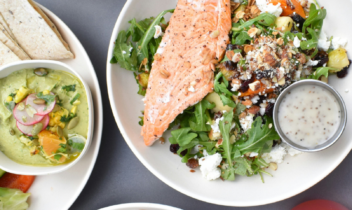
What should I do if I suspect I have a food allergy?
Answer
Have you ever asked yourself or wondered, “Do I have a food allergy?” When you suspect a food allergy it is tempting to self-diagnose, but what you may be doing is creating dietary restrictions that can lead to inadequate nutrition. If you believe you or someone you know has a food allergy, it’s important to be evaluated and properly diagnosed by a board-certified allergist.
The number of U.S. adults self-diagnosing food allergies may be on the increase. Self-reports of food allergy increased about 4 percent between 2001 and 2010, according to findings in the Asthma and Allergy Proceedings [1]. Additionally, according to a national survey conducted by the Toluna Group, one in four reported they would search the internet or visit a health-related website first for food allergy information[ 2]. Perhaps exacerbating this situation is the use of unproven tests, often marketed directly to consumers for diagnosing food allergies.
Diagnosis usually includes a combination of laboratory testing, investigation, and clinical judgement. The most important part of diagnosis is the relevant history. Guidelines emphasize that laboratory testing alone is not diagnostic of food allergy and should not be done via panels or for foods to which an individual does not have a history of reacting [3].
- The allergist will first ask detailed questions about medical history and symptoms. She will ask about reactions that have happened when the suspect food was eaten, including how much was eaten and how quickly the reaction happened.
- After discussing relevant history, the allergist may conduct tests to identify the food allergy. These procedures could include skin prick testing, blood tests or oral food challenges. The results from these tests will be used by the allergist to make a diagnosis. Oral food challenges are the gold standard for diagnosing a food allergy.
- If there is a positive result to the suspected food, the allergist will discuss ways to effectively manage a food allergy, including strict avoidance, emergency medications, and possible treatment options.
The vast majority of people do not have food allergies – for instance, only 1-2% of Americans has a peanut allergy. However, if you believe you have a food allergy or are experiencing symptoms after eating certain foods, it’s recommended to seek a board-certified allergist for a proper evaluation to avoid misdiagnosis and unnecessary food restriction. Start your search by asking your primary care provider for a referral. You can also search for an allergist near you by visiting the physician directory provided by the American College of Asthma, Allergy and Immunology [4].
For more information on accurately diagnosing a food allergy and effectively managing a food allergy, visit www.foodallergyawareness.org/campaignhome/.


